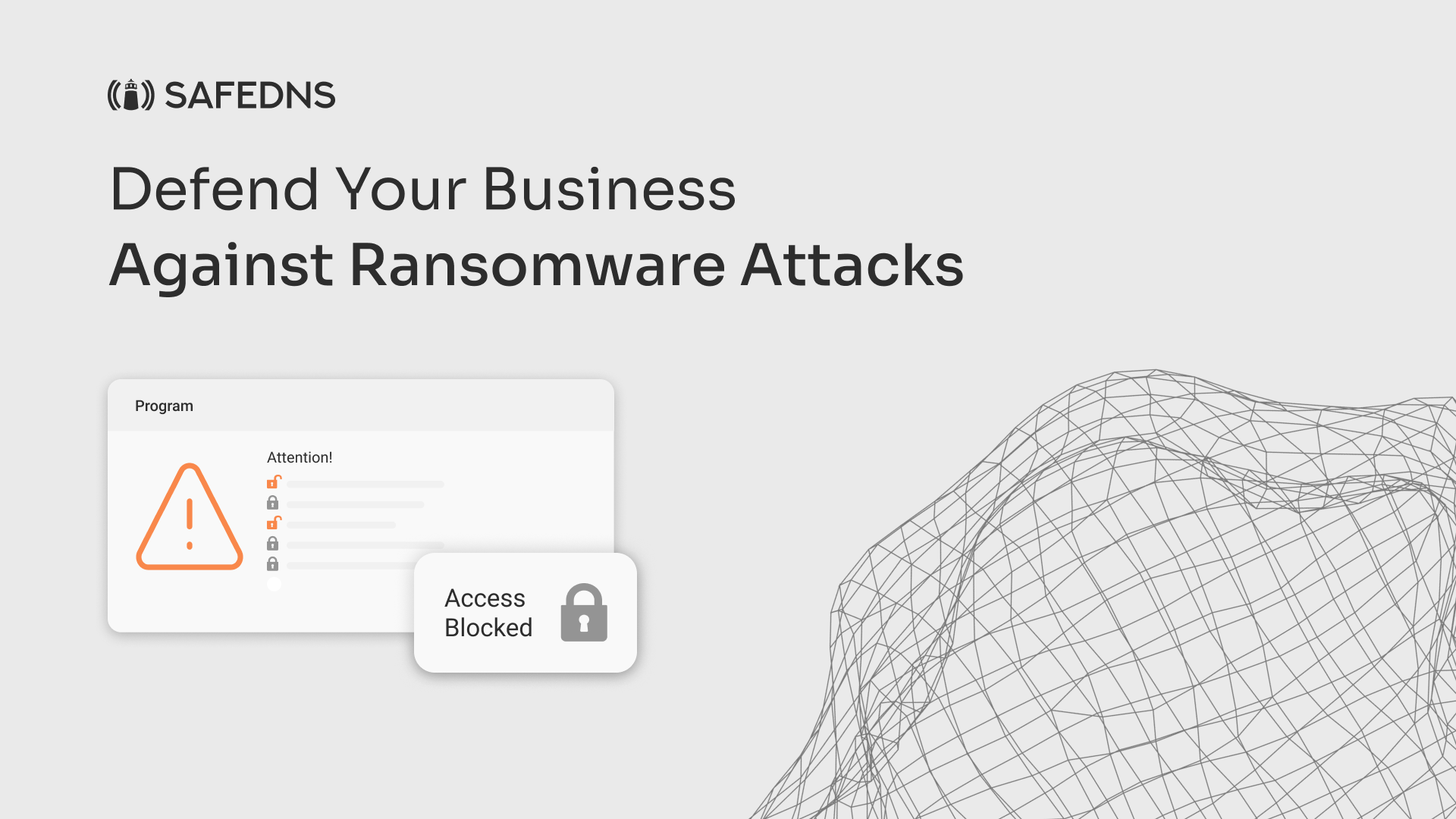
Defend Your Business Against Ransomware Attacks
\Ransomware attacks are becoming increasingly prevalent, posing severe threats to individuals and businesses. Safeguard your organization from these malicious attacks with the TLP:CLEAR guide, a comprehensive resource that offers practical information on how to prepare for, prevent, and mitigate the impact of ransomware.
In our discussions on cybersecurity, we consistently emphasize the importance of web filtering. It is reassuring to see that the experts behind the TLP:CLEAR guide also recognize the value of this essential security measure. Their endorsement of web filtering further validates our stance and reinforces the critical role it plays in safeguarding organizations against cyber threats.
Web filtering is a fundamental element of a comprehensive cybersecurity strategy, providing organizations with a proactive defense mechanism against a wide range of threats. By implementing robust web filtering solutions, companies can exercise control over the content their employees can access, effectively blocking potentially malicious or harmful websites.
Additionally, the TLP:CLEAR guide underscores the significance of preventive measures to ward off ransomware attacks. It highlights the importance of Protective DNS and sandboxed browsers as proactive steps to prevent ransomware attacks before they can gain access to your systems. This strategic approach aligns with our advocacy for a preemptive stance against the evolving landscape of cyber threats.
A Proactive Approach: Protective DNS and Sandboxed Browsers
The TLP:CLEAR guide advocates for a proactive stance against ransomware, emphasizing the adoption of Protective Domain Name System (DNS) services and the use of sandboxed browsers. These measures go beyond traditional security practices, addressing the risks associated with web browsing and malicious internet activity head-on. By leveraging these solutions, organizations can erect robust barriers, effectively safeguarding themselves against the potential dangers that lurk on the internet.
Preventing ransomware attacks requires a comprehensive understanding of potential vulnerabilities within operating systems. The TLP:CLEAR guide delves into the nuances of operating system security, offering insights into how organizations can fortify their systems against potential ransomware threats. This proactive approach extends beyond individual devices, encompassing the broader infrastructure security that is paramount in the face of sophisticated cyberattacks.
Web Filtering: A Crucial Pillar of Cybersecurity
At the heart of the TLP:CLEAR guide lies a resounding endorsement for web filtering—a fundamental element of a comprehensive cybersecurity strategy. This critical component empowers organizations to exercise control over the content their employees can access, creating a robust defense against an array of potential threats. By implementing stringent web filtering solutions, companies can actively thwart access to potentially harmful websites, thereby mitigating the risk of falling victim to cyberattacks.
Our conversations around cybersecurity have consistently underscored the importance of web filtering. It is heartening to note that the experts behind the TLP:CLEAR guide align with this perspective, recognizing the intrinsic value of web filtering as an essential security measure. Their validation serves to reinforce our stance and highlights the pivotal role that web filtering plays in safeguarding organizations against the ever-evolving landscape of cyber threats.
Implementing the TLP:CLEAR Checklist: A Call to Action
The TLP:CLEAR guide provides organizations with a tangible roadmap to enhance their cybersecurity posture, offering actionable steps to mitigate the risks associated with ransomware attacks. A key recommendation within the guide is the implementation of Protective DNS, an integral layer of defense that enhances an organization's resilience against potential threats. Moreover, adherence to cybersecurity best practices, including the use of anti-malware and antivirus software, is crucial in maintaining a robust defense mechanism against potential infiltration.
The guide also emphasizes the importance of continuous employee training to recognize and avoid phishing emails, a common vector for ransomware attacks. This human-centric approach complements the technological defenses recommended in the guide, creating a comprehensive security program that addresses both technical and human factors.
The comprehensive checklist provided in the TLP:CLEAR guide serves as a beacon, guiding organizations through the intricate landscape of cybersecurity. By proactively following these guidelines, businesses can significantly reduce their susceptibility to ransomware attacks and create a robust defense mechanism to safeguard their digital assets.
In conclusion, as the threat of ransomware continues to evolve, the TLP:CLEAR guide stands as a stalwart companion, arming organizations with the knowledge and tools necessary to defend against these malicious attacks. Embracing a proactive cybersecurity approach, leveraging Protective DNS, sandboxed browsers, robust web filtering, and employing effective security programs, organizations can navigate the digital landscape with confidence, knowing that they have fortified their defenses against the ever-present threat of ransomware.
Take advantage of the SafeDNS trial period and try all the best features

